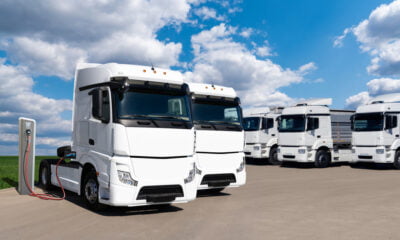

Economy
6 Proven Hacks To Create A Truly Eco-Friendly Fleet
If global environmental goals are to be reached, every business and individual is going to need to do their bit to help. Without them making necessary changes, the global climate could be unsustainable by 2100.
Governments have committed to dramatic CO2 emissions reductions by 2050 and legislation to achieve that is an inevitable part of the picture. In the meantime, companies will have to take it on themselves to adapt more sustainable initiatives.
Businesses with fleets need to meet the requirements and try to foresee possible future measures well in advance to meet moral and social obligations as well as functional ones. Harvard Business School recently listed some ways that supply-chain management systems can be more environmentally friendly. We have some other ideas worth pursuing, which we have provided below.
1. Work with a fleet management provider
Making sustainability a key priority when dealing with a fleet management provider will help you begin delivering tangible results.
A fleet management provider or partner may support you in vehicle leasing, purchasing, maintenance, fuel management and much more. All of these factors have an impact on how green your fleet is.
It’s vital to open the conversation with whoever is managing your fleet and enable dialogue where environmental matters are concerned.
2. Set targets
We previously wrote about the benefits of creating an eco-friendly supply chain. One of the tips that we shared emphasized the importance of setting optimal carbon emission reduction targets.
As with all aspects of business, setting distinct and realistic goals tends to reap rewards and make things happen.
Sitting down with those who are responsible for fleet purchasing, leasing and maintenance and laying out some specific goals around sustainability will help to push that agenda forward.
You also want to carefully monitor the fuel use of your fleet. You will have an easier time doing this by using a fuel card, so you can track expenditures specifically made on fuel. This will help you identify the need for greater fuel efficiency.
3. Instigate fleet monitoring
One of the most simple and low cost things you can do to make your fleet more sustainable is fleet monitoring.
By introducing this technology, you can help your drivers stay safer on the roads and keep front-of-mind issues around careful, effective, efficient and environmentally aware driving.
Fleet monitoring tools can allow you to monitor factors such as how long vehicles are left idling for and driving styles that lead to unnecessarily heavier fuel consumption and implement training and guidance where appropriate.
It may also flag instances where drivers are being pushed too hard to do too much or travel too far within their hours – an issue that needs to be addressed for the environment and for staff wellbeing and retention.
4. Work with the Energy Saving Trust
The Energy Saving Trust offers free expert assessment of fleet vehicles with a view to sustainability.
The service includes a fleet support manager meeting to outline your current processes, infrastructure and costs.
This is then followed by a full analysis and report with recommendations on how to improve.
Advice can be offered on Government and other grants available to help.
The service is applicable to a wide variety of fleet types including grey fleet (where your employees use their own vehicles for business purposes).
5. Identify opportunities to implement electric vehicles
It’s vital to be realistic about where electric vehicles could fit into your fleet and it is clearly not always possible to use them.
There may well be pockets of your business in which you could implement electric or hybrid vehicles, however, which could make a large difference to its overall sustainability.
Route optimisation and reviews of duty cycles may need to be implemented to ensure it is achievable.
6. Consider driver training
It’s not just the vehicles we have that cause a big impact on the environment, but also the way we drive them.
Implementing a driver training program to support your staff to drive more efficiently can support your sustainability goals.
When training is presented to staff in the right way – as an opportunity for personal development as opposed to a punishment, as with all training, it can boost morale too and a sense of the company feeling staff are worth investing in.






























